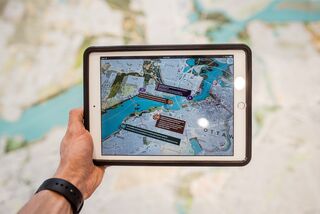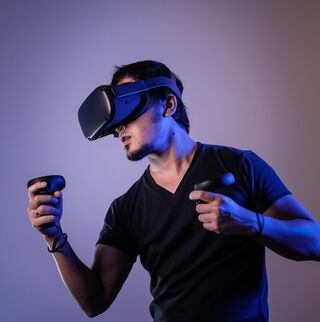Fantasies
The Effects on Consumers of Augmented and Virtual Reality
There's a lot of excitement about AR and VR, but they impact us very differently
Posted April 27, 2022 Reviewed by Gary Drevitch
Key points
- While both Augmented and Virtual Reality hold advantages over traditional media, each has a different influence on human psychology.
- New research suggests that augmented reality is better suited for driving purchases than virtual reality.
- In contrast, virtual reality holds the advantage of improving brand image since it's superior at generating fluent mental imagery.
Virtual and augmented reality are technologies most often associated with gaming. But more recently, they've been used in the realm of marketing to transform the consumer experience in new and profound ways. From IKEA using AR to transpose furniture into your actual living room to organizing branded experiences in the metaverse using VR, the potential for these technologies is significant.
Amid all of the excitement and hype, there isn't a clear understanding of how these technologies impact consumers. How does each shape the experience, and can the two be used in tandem? Research led by Tim Hilken of Maastricht University in The Netherlands aimed to find out.
Studying the Different Effects of Virtual and Augmented Reality
In Study 1, 300 participants were recruited online to view and interact with a website of a new cafe. They were divided into three groups.

The VR group viewed the virtual tour of the cafe, while the AR group viewed it through holograms. The control group viewed the website as any ordinary consumer would.
All groups were able to interact with these products via a mouse and touchpad. Participants were asked about their purchase intentions and the development of their mental imagery during the experience.
The results suggest that both AR and VR increased customers' purchase intentions compared to the control group. Consistent with the researchers' hypothesis, when compared head-to-head, AR was more effective in stimulating purchases than VR by generating more fluent mental imagery of the products.

For Study 2, 360 participants were recruited, and it employed a similar setup as the first: an AR group, a VR group, and a control group. However, this time, participants weren't asked about their purchase intentions but rather about their brand attitudes. Like study 1, participants were also probed about their mental imagery.
The results found that both VR and AR were more effective than the conventional setup in creating positive brand attitudes. Interestingly, when compared head-to-head, VR was, in fact, more effective than AR.

This was mediated because it created more fluent mental imagery about the overall retailscape, which is crucial for building brand representations.
In the final study, the researchers sought out whether there may be an optimal combination for AR and VR during the same consumer experience. The researchers enlisted 353 participants and the experiment had two phases: one in which participants browsed the items on the menu either with AR or VR, and one in which they explored the cafe — again, either with a VR headset or with AR technology.
The results suggest an optimal sequence: Consumers using AR to decide what to buy demonstrated an increased purchase intention, while utilizing VR to explore the retail space positively impacted the brand image.
Conclusion
While there's much excitement about the application of VR and AR to experiential marketing, few studies to date explored the unique benefits of each and how they may be optimally applied in tandem during the same consumer experience. Both appear to influence consumer psychology and brand associations in different ways.
Overall, the results of this investigation suggest a very nuanced account of these technologies: While AR is best suited for driving purchase intentions during the browsing experience, AR is much better at positively influencing the brand image. The results also suggest that utilizing both technologies in a specific sequence (AR first, followed by VR) can boost both marketing objectives, providing the best of both worlds.
This post originally appeared on the neuroscience of branding blog
References
Hilken, T., Chylinski, M., Keeling, D. I., Heller, J., Ruyter, K., & Mahr, D. (2021). How to strategically choose or combine augmented and virtual reality for improved online experiential retailing. Psychology & Marketing, 1– 13. https://doi.org/10.1002/mar.21600


